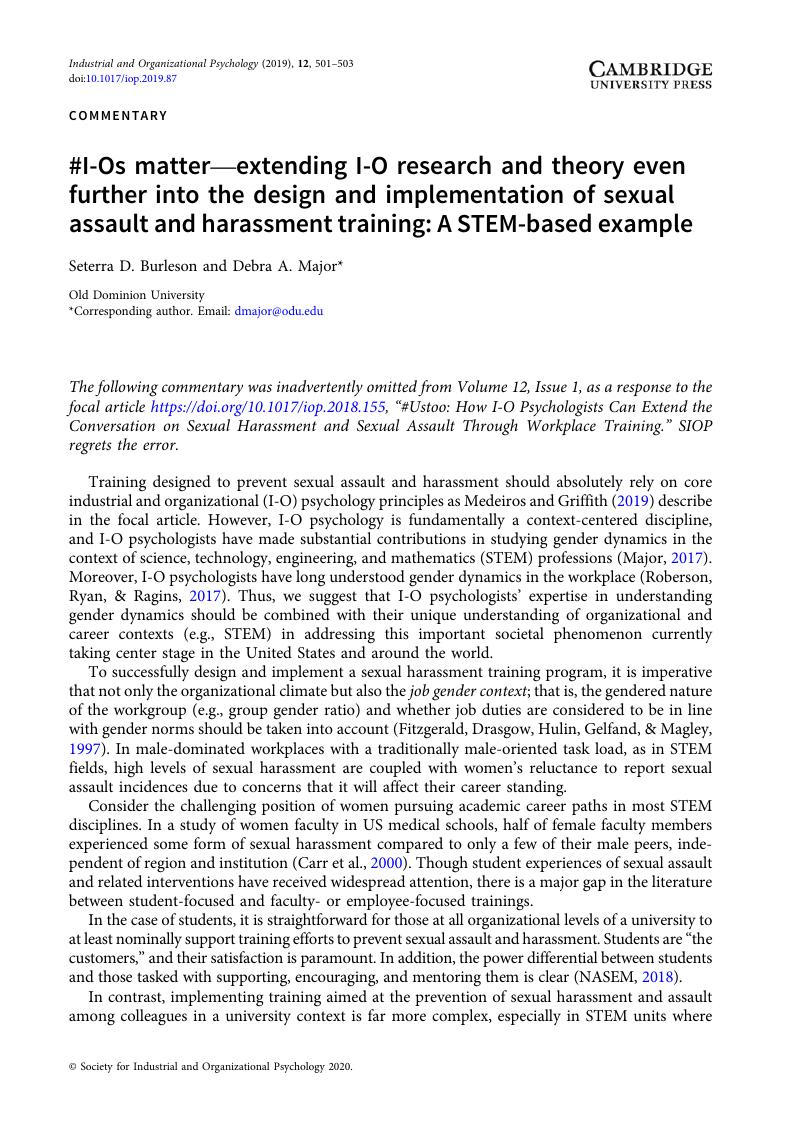Major, D. A. (
2017, April).
Gender: Increasing the participation and persistence of women in STEM. In
Henderson, A. A. &
Matthews, R. A. (co-chairs), Hot Topics in Diversity and Inclusion in Organizations, IGNITE session presented at the 32nd Annual Conference of the Society for Industrial and Organizational Psychology,
Orlando,
FL.
Google Scholar 